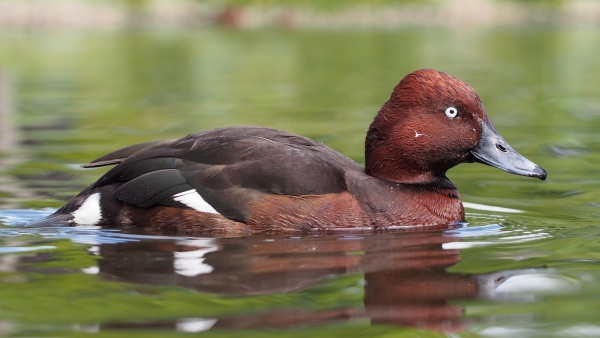Facts About Ferruginous duck
The ferruginous duck, also known as the ferruginous pochard, common white-eye, or white-eyed pochard, is a medium-sized diving duck found across Eurosiberia. Its scientific name derives from Greek and Russian words associated with seabirds and ducks. The male, during the breeding season, boasts a striking chestnut color with distinctive white undertail feathers, while the females exhibit a more subdued coloration. These ducks prefer shallow freshwater bodies abundant with vegetation but can also inhabit saline or brackish waters.
Their breeding range extends from the Iberian Peninsula to western Mongolia and stretches south to Arabia. In winter, they migrate to the Mediterranean Basin, the Black Sea, sub-Saharan Africa, and parts of South and Southeast Asia. Although they are inherently social birds, ferruginous ducks are not as gregarious as other duck species, though they do form sizable flocks during the winter months. Their diet comprises aquatic plants, mollusks, insects, and fish, which they obtain through diving or dabbling.
Conservation efforts are crucial for the ferruginous duck due to threats from habitat degradation caused by human activities such as dam construction, pollution, and the introduction of non-native species. Climate change also presents risks, including drought and increased disturbances from fishing activities. Illegal hunting remains a significant threat despite existing protection measures. The species is included under the Agreement on the Conservation of African-Eurasian Migratory Waterbirds (AEWA), and various conservation initiatives, such as protecting breeding habitats in Armenia, are being implemented to help secure their future.

 Israel
Israel